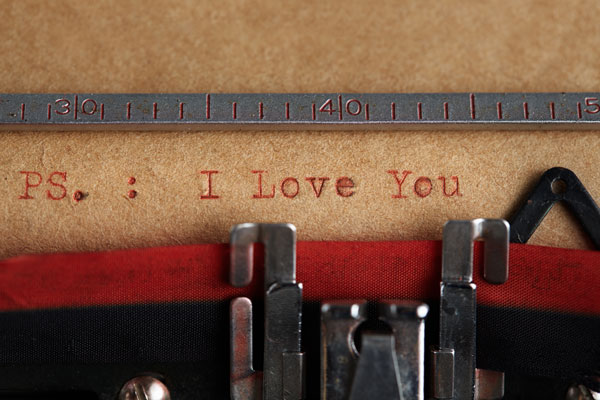 1
1 
I love the idea of spring cleaning. Back in Romania we frantically scrubbed every corner of the house, hauled heavy rugs outside to be aired, and spread generous amounts of lavender in closets and dresser drawers.
But I don’t remember throwing clothes away.
It’s true we had a more permanent relationship with our clothes, probably born out of necessity–communism has its share of problems, but consumerism isn’t one of them. Perhaps this is why the KonMari method never quite resonated for me. But for all you KonMari fans out there, take a moment to consider these seven facts before embarking on your next purging ceremony.
– Due to the popularity of Tidying Up With Marie Kondo, thrift shops and donation centers are having trouble keeping up. Treehugger reports that Goodwills in the D.C. area saw a sixty-
six percent increase over last year. Do you really want to add to their problem?
– Your well-intentioned donations may hurt the environment more than help it. Only 0.1 percent of the clothes we donate are recycled into new textile fibre. A large percentage of the rest end up in methane producing landfills or toxic gas emitting incinerators.
– Fashion trends have a way of coming back. Don’t throw your clothes away just because they are not trendy anymore. Remember, even fanny packs and mommy jeans have found their way back on the runway.
I get the appeal of Marie Kondo’s spark joy method. It’s simple to follow and validates our need for joy. But I’m inclined to take a less aggressive approach.
– I get the appeal of Marie Kondo’s spark joy method. It’s simple to follow and validates our need for joy. But I’m inclined to take a less aggressive approach. I assess my wardrobe at the beginning of each season. I hold on to pieces that fit my lifestyle and current trends, and I part with pieces that are damaged, that I’m not comfortable wearing, or no longer fit my body. The difference? I make sure I have the things I need, even if they don’t spark joy, so I avoid wasting more money. Also, I avoid feeling guilty about past spending.
– You’ve probably read stories about bloggers who make $29,000 selling their closet. I don’t know what they had in their closet, but recently a second-hand shop offered me less than fifteen percent of the market suggested retail price of some nearly new items.
– I don’t know about you, but an empty closet is just another excuse to go shopping. After that first dopamine rush caused by the newly organized closet I’d look to replace the things I got rid of.
If you want to save money, declutter your closet, and save the planet, shop with restraint. It might not be as easy as buying with impunity and purging, but it’s more cost-effective, less wasteful and better for the environment.
Posted by Mirela Gluck at 12:00 PM
A SHOPPING , Fashion: Trends, Style, and Business , Insights , Our Views and Opinions , Shopping News , Shopping Trends , Style , Tips Guides |
 2
2 
I don’t want to minimize the importance of the relationship between bloggers and PR agencies. But like everything else in life, they require work.
So when I find myself invariably ignoring your newsletters or even deleting them without so much as opening them, it’s a clear sign that something’s gone awry, and I owe it to the relationship to speak up honestly, and say what’s bothering me.
At least, that’s what my therapist is always telling me.
So, in the interest of improving our relationship, here are some of the things that have been bothering me lately:
1) The “Breaking News” subject line
Don’t call an actress wearing your client’s dress “breaking news,” even if it happens to be the actress in that Netflix movie that’s up for all the awards, or a certain member of the British royal family. If you want to leave me wanting more, try to get a little more creative. Put some thought into your gestures. Experiment once in a while. It’ll do us both good.
2) When you send images without owning the rights to them
When you do that, I either have to find similar photos that aren’t copyrighted, or buy the images myself. This says to me that you either a) don’t value my time, or b) want me to pick up the tab. Neither of these mindsets are attractive.
3) When you say “Loved your article about xyz,” even though I never wrote an article on said topic
Please don’t throw around the term love unless you mean it. Do your research! All it takes is reading just one of my posts. Or don’t. Just don’t lie to me
4) You are guilty of ridiculous newsjacking.
There is no shame in newsjacking, tapping into the news is an effective way to get my attention. Having said that, when I see “New Year’s Eve Essentials” and then you tell me about your company’s bra, I will be annoyed.
5) When you send me collages with “trend alerts”
I know you mean well, and you are trying to save me time. But it makes me feel manipulated. I have to be true to myself and the brands I believe in, so please don’t go to all the trouble of creating a collage. It just makes me feel guilty when I don’t feature it.
6) You literally have no idea what the site is about.
Sometimes I wonder if you ever listen to a word I say. I cover conscious consumerism, sustainable fashion, retail and NYC sample sales . Please don’t send me press releases about non-fashion related things. Like Manhattan Real Estate.
Unless of course you’re letting me know about a sale on loft spaces in Tribeca, in which case I’ve never loved you more .
Posted by Mirela Gluck at 02:13 AM
For Business , Opinions |
 0
0 
If you spent your weekend bingeing on Netflix’s Tidying Up with Marie Kondo, you’re in good company. The KonMari method of organizing and purging has struck a chord world over, garnering a huge following. But what’s to be done with all the clothes that don’t spark joy?
Hopefully you’ll choose to discard the unwanted clothing in a responsible way. That means not putting your clothes in garbage and choosing their next home carefully—or, as Gwyneth might say, consciously uncoupling with them.
If you’re doubting how important this is, here are some sobering statistics to convince you.
- Americans now buy five times the number of garments they bought in the nineteen-eighties, and that number is growing
- The United States produces fifteen billion pounds of textile waste a year
- The Council of Textile Recycling reports that only fifteen percent of those billions get recycled
- clothing, which does not disintegrate easily, makes up six percent of landfill waste
- until an item fully disintegrates, it produces toxins and disburses them into the atmosphere, to wit:
- Rubber-Boot Soles take fifty-eighty years to disintegrate
- Leather shoes take twenty-five to forty years
- Wool Clothing takes one to five years
Assuming I’ve done my job convincing you of recycling’s importance (I’ve done my job convincing you, right?) the next step is figuring out what to do with these items of clothing. Giving them as hand-me-downs to a friend or relative is always a good option. Upcycling them into new pieces of clothing, quilts, bunting, table clothes or artwork is a wonderful approach.
Donating them is also a great strategy, provided you educate yourself.
Logistics play a big part here. Not everyone has a car or frankly a parking lot or garage here, so convenience is important. While there are no curbside textile recycling programs in New York City, refashionNYC, a program launched by the Bloomberg administration in 2011, offers free donation bins to residential buildings. RefashionNYC works in collaboration with the NYC department of sanitation and the non-profit organization, Housing Works. I haven’t seen too many of those out in the wild, so if you know of any, please let me know.
Another non-profit organization, GrowNYC hosts daily Stop’N’Swap events throughout the city, and, in collaboration with the for-profit Wearable Collections, organizes drop-off opportunities at different Greenmarket locations.
Americans now buy five times the number of garments they bought in the nineteen-eighties
You’ll also want to research whatever organization you choose to donate to. We tend to assume that organizations that take these donations will sell them and donate the proceeds to charities, but it’s not that simple
Non-profit entities like Goodwill and the Salvation Army only sell in their stores twenty percent of the items received from donations. Another portion is sold through Goodwill outlets and auctions and what is left, about fifty percent, is sent to for-profit textile recycling organizations.
According to S.M.A.R.T., the organization that represents the interests of secondary materials and recycled textiles, only half of the items received are recycled. About thirty percent of them get cut into rags for industrial use, and twenty percent are processed into a soft fiber for filling furniture, home insulation and car sound-proofing. The destination of the other fifty percent isn’t well publicized. The uncomfortable truth is that at high costs to the environment they make their way across the ocean to East African or Eastern European countries to be sold for a profit, and in effect undermining those developing economies.
There’s a lot to consider when it comes to getting rid of unwanted clothes, and no quick answers. Thinking twice before making another purchase could be the best route to take. Shopping at sample sales is a great way to give clothes a second chance. Sharing this type of information with others will also help.
Further complicating the issue of recycling is that the government, non-profit and for-profit companies are all vying for a sliver of your unwanted clothes, so it’s important to research what the different companies do with your donated clothes.
Posted by Staff Writer at 10:20 AM
Our Views and Opinions |
 1
1 
I don’t harbor any nostalgia for communism, but I can’t deny the influence it had on my relationship with fashion.
Imagine Romania, circa 1980’s: rationed food, rationed gas, rationed hot and cold water, car curfews on Sundays, two hours of TV a day, freezing-cold apartments and exactly one “house of fashion” in each major city.
Although “Casa Modei” was only a pretentious tailor shop located in an elegant Main Street building, it gave status to its customers. In a society that demanded uniformity, where everyone drove the same type of car and lived in similar apartments, some of us saw fashion as a rare opportunity to be different.
Being well dressed required connections (to stores or factories producing for the West), a good eye and creativity. Having relatives who lived “Outside”, was also an advantage. Lucky for me, I had an uncle who not only lived in New York, but was also gay. He was impossibly stylish and very generous. He understood how to mix high end luxury pieces (that he would send me) with whatever I could get my hands on there, so he sent me trendy bags, designer sunglasses, jeans, designer jackets, cashmere sweaters (unheard of in Romania) and beautiful accessories. That was my first lesson in combining splurge/steal clothing.
While we wouldn’t want to recreate the conditions under which I developed my fashion sensibilities, I am happy to share with you important takeaways:
ALL YOUR CLOTHES SHOULD MAKE YOU HAPPY.
I had more than one dress as a teenager, but I can count them all on one hand. Most of them had the same story of origin. I designed it and found the right fabric and Grandma sewed it on her manual Singer Sewing Machine. My dresses were made with love and they made me happy. Like the one I wore to my first boyfriend’s birthday party. It was there I discovered that I wasn’t his only “girlfriend” invited to the party, but that doesn’t mar my fond memories for the floral, flounce hem, spaghetti strapped midi dress that saved the day for me.
NO MONEY? NO PROBLEM. YOUR CREATIVITY WILL KICK IN.
We didn’t have money, and most certainly we didn’t have Instagram to tell us how to look. We had to create, improvise, learn skills and take fashion risks.
Like making my prom dress from a dreamy Christian Dior nightgown sent to my mom by my uncle. A very feminine white gauzy cotton 1970s peasant style nightgown got an easy makeover with the help of an elastic waistband and a shirred hem. The result was a long and flowy bohemian number. I had such a good time dancing the night away in it, that I was able to let go of any ill-will I could have harbored against Courtney Love for getting credited for starting the lingerie dress trend in the nineties.
BUY QUALITY OR YOU’LL PAY TOO MUCH.
As I said, overspending was discouraged. At one point the food was so scarce that if someone was discovered with food rations (sugar, flower, oil) larger than a month’s supply, she could go to jail for six months. So I learned to recognize high quality clothing. Natural fabrics, metal zippers, buttons, good thread, and finished seams are all indicators of a quality item that was made to last, not just to be sold. There was a saying back then, “I am too poor to buy cheap stuff,” but its meaning is timeless and universal. So much so, I’m going to make it my personal mission to bring that expression back. (And while I’m at it, I’m also going to get the word out about Courtney Love taking credit for my idea!)
I miss those days of fashion freedom when the creative process was just as important as the end result. It’s a great lesson in the power of the human spirit and how adversity forces people to look for alternative pathways. I suppose it’s fitting this week to give thanks for all the experiences that life brings to us, because we never know where they might lead to. (Or what outfits we might get out of the situation.)
Posted by Mirela Gluck at 08:47 AM
bargain news , Our Views and Opinions , Shopping News , Shopping Trends |
